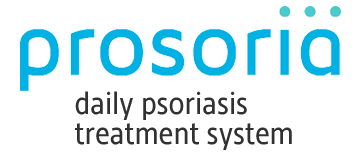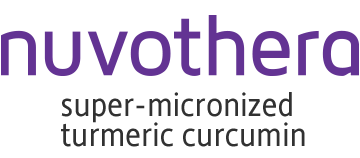
Psoriasis is a chronic immune-mediated disease and one of the most common skin conditions in the country. According to the National Psoriasis Foundation, over 8 million Americans have psoriasis. About 125 million people are affected by psoriasis worldwide.
If you’re not sure what to look for, you may not know that you even have psoriasis. Many of its symptoms might resemble a simple rash, skin irritation, or other common skin conditions, like seborrheic dermatitis, ringworm, eczema, and pityriasis rosea.
Once you’ve identified the type of psoriasis you have, you can move forward with a treatment plan. Let’s take a closer look at the most common signs and symptoms of psoriasis.
Symptoms of Psoriasis
Psoriasis is an autoimmune disease characterized by a sudden speed up in the life cycle of your skin cells. This most commonly results in patches of red, scaly skin that may be itchy or painful as new cells gradually build up over old skin cells. Other psoriasis symptoms include:
- Generally dry, cracked skin
- Soreness
- Pitted nails
- Stiff and inflamed joints.
Patches or scales can appear as small spots of dry, irritated skin, or they can be more severe and appear over large areas of your entire body. Your symptoms and the severity of those symptoms vary based on the type of psoriasis you have. The main types of psoriasis include:
- Plaque – The most common form of the disease, plaque psoriasis is characterized by red patches of scaly skin covered in a layer of silvery white scales (a result of the buildup of dead skin cells). These most often appear on your knees, elbows, scalp, and lower back.
- Guttate – Guttate psoriasis comprises lesions that appear as smaller, red spots.
- Inverse – With inverse psoriasis, lesions appear as smooth, red rashes most often appearing in body folds, like under your arms, behind your knees, and around your groin.
- Pustular – As the name suggests, pustular psoriasis is characterized by the appearance of pustules, or blisters often filled with pus, that may also be surrounded by red, inflamed skin.
- Erythrodermic – Erythrodermic psoriasis is the most severe form of the disease, characterized by peeling, burning, itchy skin spread all across your body.
- Nail - Nail psoriasis is common among people who already suffer from skin psoriasis symptoms. This type of psoriasis can resemble that of a fungal infection and can affect either nails, toenails, or both. Nail psoriasis symptoms can include loosening or crumbling of the nail, thickening of the white skin under the nail, yellow-red nail discoloration, and more.
Psoriatic Arthritis
Although the more obvious symptoms are visible on your skin, psoriasis is not a purely cosmetic disease. Unlike other skin disorders and conditions, psoriasis can also result in a form of arthritis known as psoriatic arthritis. This involves pain, stiffness, and swelling in your joints and tendons. If left untreated, the damage to your joints and tendons can become permanent. Psoriatic arthritis can also result in redness and pain in your eyes (conjunctivitis).
Quality of Life
The severity of your condition is based partly on how much of your body is affected by psoriasis. For example, a psoriasis plaque that is equivalent to the size of the palm of your hand is equivalent to about 1 percent of your total body surface area. Less than 10% body surface area is considered mild to moderate. Greater than 10% is considered severe. However, the severity also depends on how psoriasis affects your general quality of life. For example, red, painful patches or blisters on your feet and hands can make walking or performing basic daily activities extremely painful and difficult.
Risk Factors and Triggers
Psoriasis can occur at any age but is most common in ages 15 to 35. Another peak of psoriasis is between ages 45-65. About 10 to 15 percent of people who develop psoriasis get it before the age of 10. It’s hard to determine exactly what causes psoriasis but the biggest risk factor is genetics and family history.
If your parents or someone in your family has psoriasis, there is a good chance that you may have it in your genes. Studies suggest that if you have one parent with psoriasis, you have about a 10 percent chance of developing it yourself. If both your parents have psoriasis, your chances of developing the skin condition increase to 50 percent.
The condition most often starts or gets worse based on a trigger or series of triggers. These can vary from person to person, but the most common triggers include:
- Stress
- Smoking
- Certain bacterial, viral, or fungal infections—like strep throat
- Damage to your skin (cuts, scrapes, bug bites, severe sunburns)
- Vitamin D deficiency
Many people may wonder, “Is psoriasis contagious?” But it’s important to understand that psoriasis is not contagious, meaning that you cannot get it from other people with psoriasis, nor can you give it to others.
Diagnosing Psoriasis
The best way to determine if you have psoriasis is to get a diagnosis from your dermatologist. Thankfully, the diagnosis is fairly easy and straightforward. Your doctor can usually determine if you have psoriasis by examining your skin, hair, and nails and by discussing your medical history.
To know for sure if you have psoriasis and to determine the specific type, your doctor may also conduct a biopsy, which involves taking a small sample of your affected skin under local anesthetic. When viewed under a microscope, the skin sample will appear thicker and with more inflammation compared to skin with other conditions like eczema.
From there, the doctor can prescribe a treatment plan. There isn’t currently a cure for psoriasis, but the good news is that there are a wide variety of treatments available, including topical solutions, light therapy, and systemics (oral and injected medication). Many of these treatments have been found to be effective, allowing you to manage your symptoms of psoriasis. If you think you have psoriasis but you’re not sure, the best thing you can do is to contact your doctor and begin the steps to control the condition and bring back peace of mind.
If you have any more questions about psoriasis symptoms and signs or are still asking yourself, “What is psoriasis?” Please visit Prosoria.com today for more information!
Sources:
- https://www.psoriasis.org/content/statistics
- https://www.healthline.com/health/psoriasis-misdiagnosis
- https://www.psoriasis.org/about-psoriasis
- https://www.psoriasis.org/about-psoriatic-arthritis
- https://www.mayoclinic.org/diseases-conditions/psoriasis/symptoms-causes/syc-20355840

